I have two posts to write about the rest of our vacation in the north of France, then it’s on to the fall semester in Rome.
We spent six days in Normandy, pretty much splitting our time between museums and sites related to the D-day invasion and other famous places. This post focuses on the latter.
We stayed in two places in Normandy: Honfleur and Port-en-Bessin-Huppain. I had never heard of the second one, but it turned out to be a lovely small port and fishing village not far from Utah Beach. And despite having now spent several years of accumulated time in France, I also had never heard of Etretat, our first stop in Normandy. I am grateful that Christian plans our French vacations, choosing places that I probably would never have visited.
Etretat is a coastal town that is famous for its beautiful cliff formations. It was raining all morning, but we got very lucky with the weather and had a two-hour break in the rain just at the time we were there. Finding parking was difficult: as I’ve mentioned before, almost everyone in France is on vacation at some point in July and August. Luckily, Christian is excellent at squeezing the car into small spots, even when parking on the left side of the street. We saw the beach first (Etretat is another holiday destination) and then walked up the hill to the left (west) for a better view.
We continued on to Honfleur, where we spent three nights. Honfleur is at the mouth of the Seine on the west side, across the huge river estuary from Le Havre on the other side. We paid a toll and waited in traffic to cross the massive Pont de Normandie, the longest bridge in France.
With its strategic location at the mouth of the river that leads to Paris, it’s not surprising that Honfleur has been inhabited for more than a thousand years. The small streets are lined with a combination of half-timbered and slate-shingled buildings.
We visited famous church that is almost entirely built of wood. Like many Normandy churches in the Roman style, it has two naves – we never found a satisfactory answer for why. On the inside, the ceilings are clearly modeled after boat keels.
The bell tower was intentionally placed away from the main building: being higher, it is more likely to be struck by lightning and they wanted to prevent having the whole church burn down if that happened.
Honfleur is in the department of Calvados, which is famous for the drink of the same name. It’s essentially an apple brandy, distilled cider that is 40% alcohol. It was for sale everywhere, but we didn’t buy any – I’ve already tasted it and don’t like it.
I did buy a local cheese called Livarot. Like Maroilles and Epoisses, it’s a washed rind cheese which means a strong flavor. It is wrapped in cattail leaves to maintain its round form while it ages.
I really liked it, and managed (with help) to finish it all by the end of our vacation. I would have loved to buy a local Camembert, but knowing that we would only have two days in Lyon before heading to Rome, I was pretty sure that I wouldn’t have time to eat the whole thing myself. No one in Christian’s family will eat it. They dislike the smell so much that when I buy it in Lyon, I have to keep it out on the balcony, not in the refrigerator.
On the way to our last stop in Port-en-Bessin-Huppain, we saw the famous Tapestry of Bayeux. The tapestry is a single piece of linen cloth, 20 inches high and more than 200 feet long, that tells the story of Guillaume (or William in English), Duke of Normandy, who conquered England in 1066 and became the first Norman King. The work itself is nearly a thousand years old, finished by 1080, and the hand embroidery is incredible in its evocative detail. You walk around a square cube to see it, passing from one numbered scene to the next in chronological order, with an explanation underneath that describes what is happening. We see, among other things, William’s marriage; his blessing by his brother Odo, the bishop of Bayeaux; the voyage by sea across the English channel, including the loading and unloading of horses and soldiers; and the Battle of Hastings. Photos are not allowed in the museum, but the two photos I took below of replica panels for sale in the gift shop give a good sense of the detail.
The boats immediately made me think of Viking ships, and I suddenly realized that William was a Viking. I knew that the Vikings had conquered Normandy, and that Normandy today still has a lot more tall, blue-eyed, blonde people than you find in the rest of France. But I had never put that together with the Conquest of England. Williams great-great-great-grandfather was the Viking chief Rollo, who conquered Normandy in 911. In England, William’s dynasty is known as the House of Normandy, but in French they are the Rollonides.
We arrived at Port-en-Bessin-Huppain on the day after the festival of the Blessing of the Sea. The church was still decorated with banners and boats.
The next morning, we found two lobsters for sale at the fish market down at the port, and I couldn’t resist. We asked the fishmonger if he could cook them for us, and he said yes – we could pick them up at 7pm, just in time for dinner. It’s a good thing that he could do that, because even the smaller of the two would never have fit into the largest pot that we had at our AirBnb. Seeing them among all of the other large fish at the market, I didn’t realize how huge they were, or that I would be paying for seven pounds (!) of lobster. Here they are on the table, each on a serving plate, next to normal sized glasses of wine:
I had the larger one, which must have been a little over four pounds. For the first time in my life, I couldn’t finish a whole lobster. Neither could Christian, even though is was smaller, just under three pounds. And of course he ate his French style, with mayonnaise rather than melted butter.
Don’t worry, we finished them the next day.



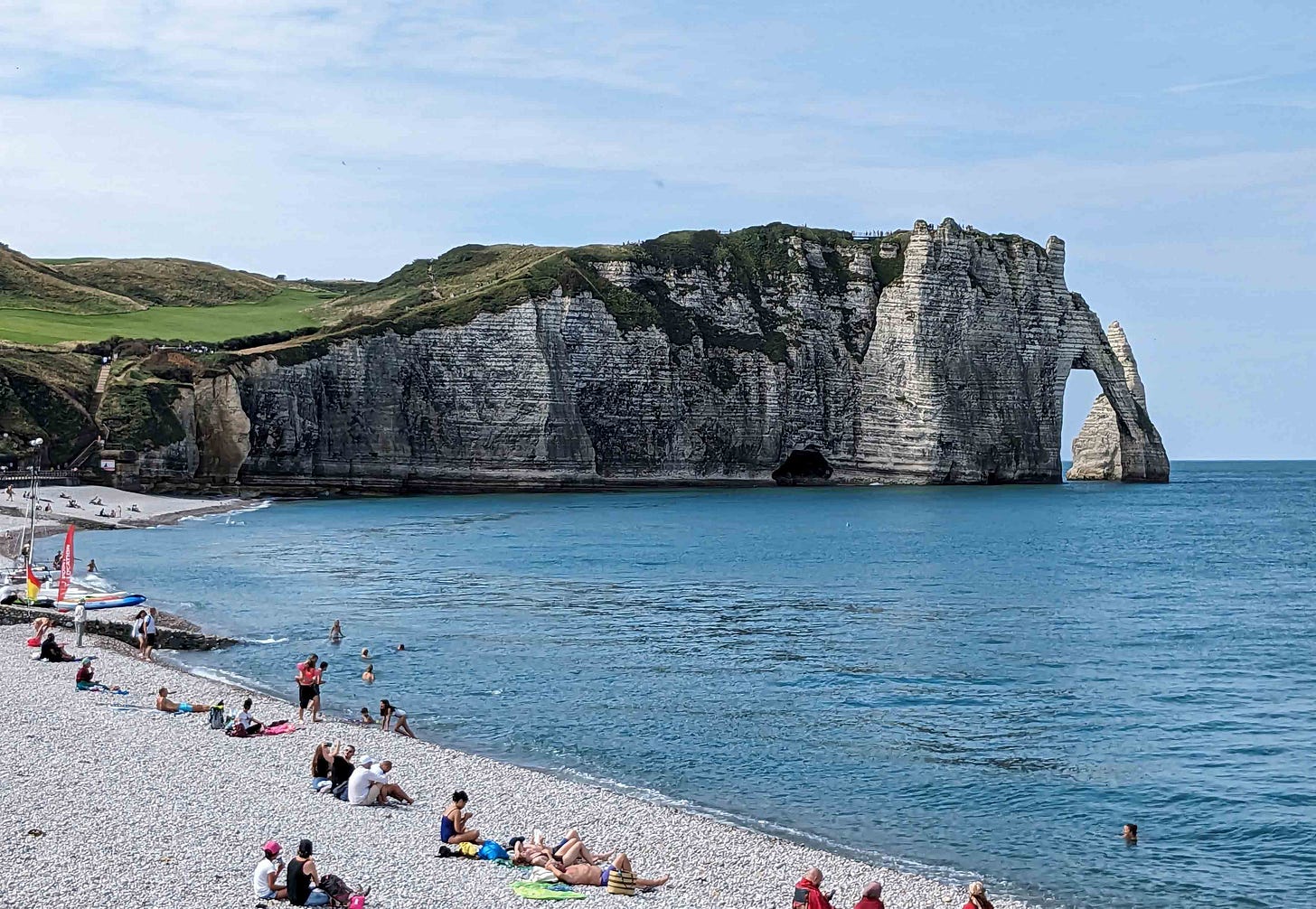
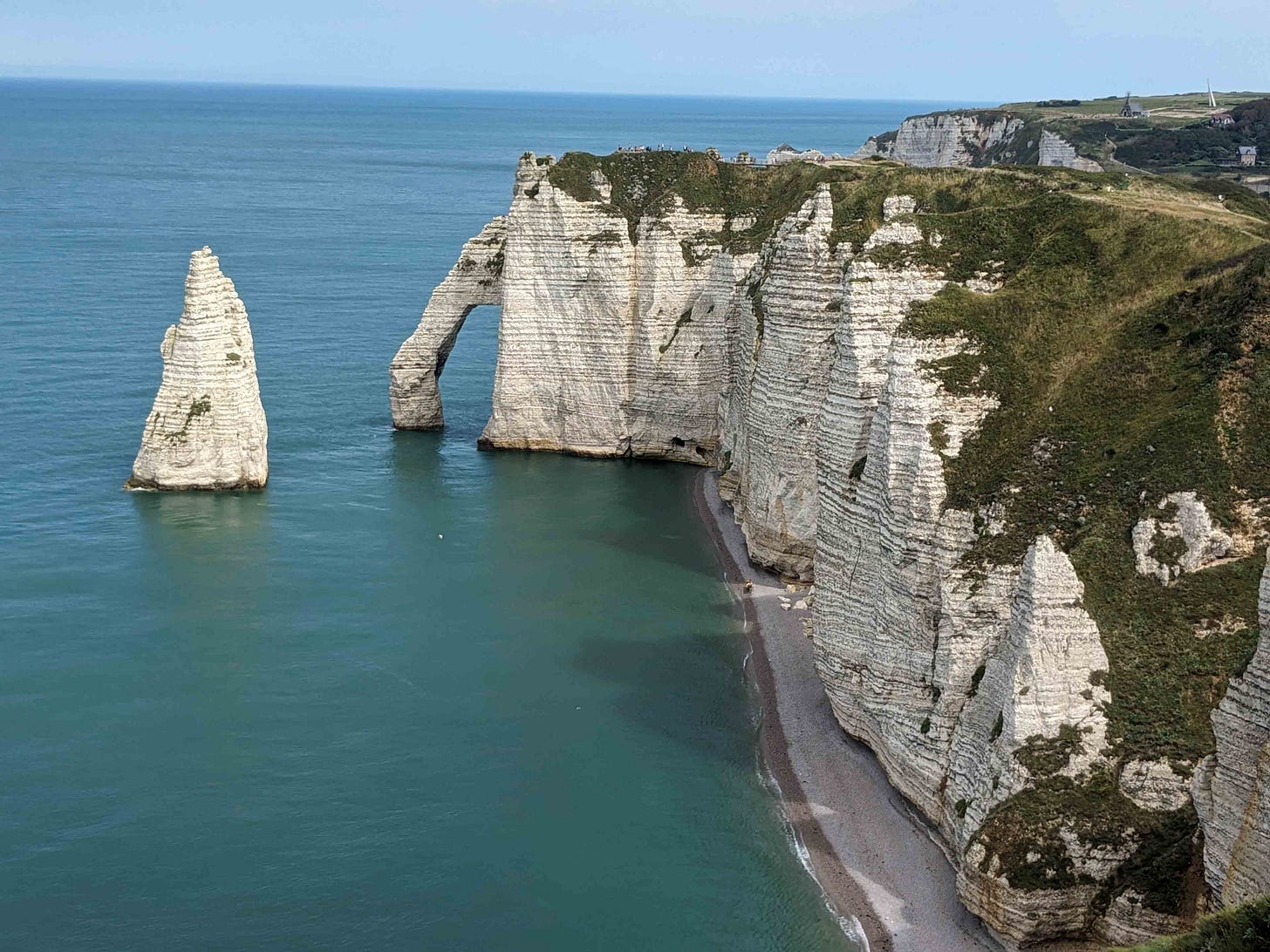
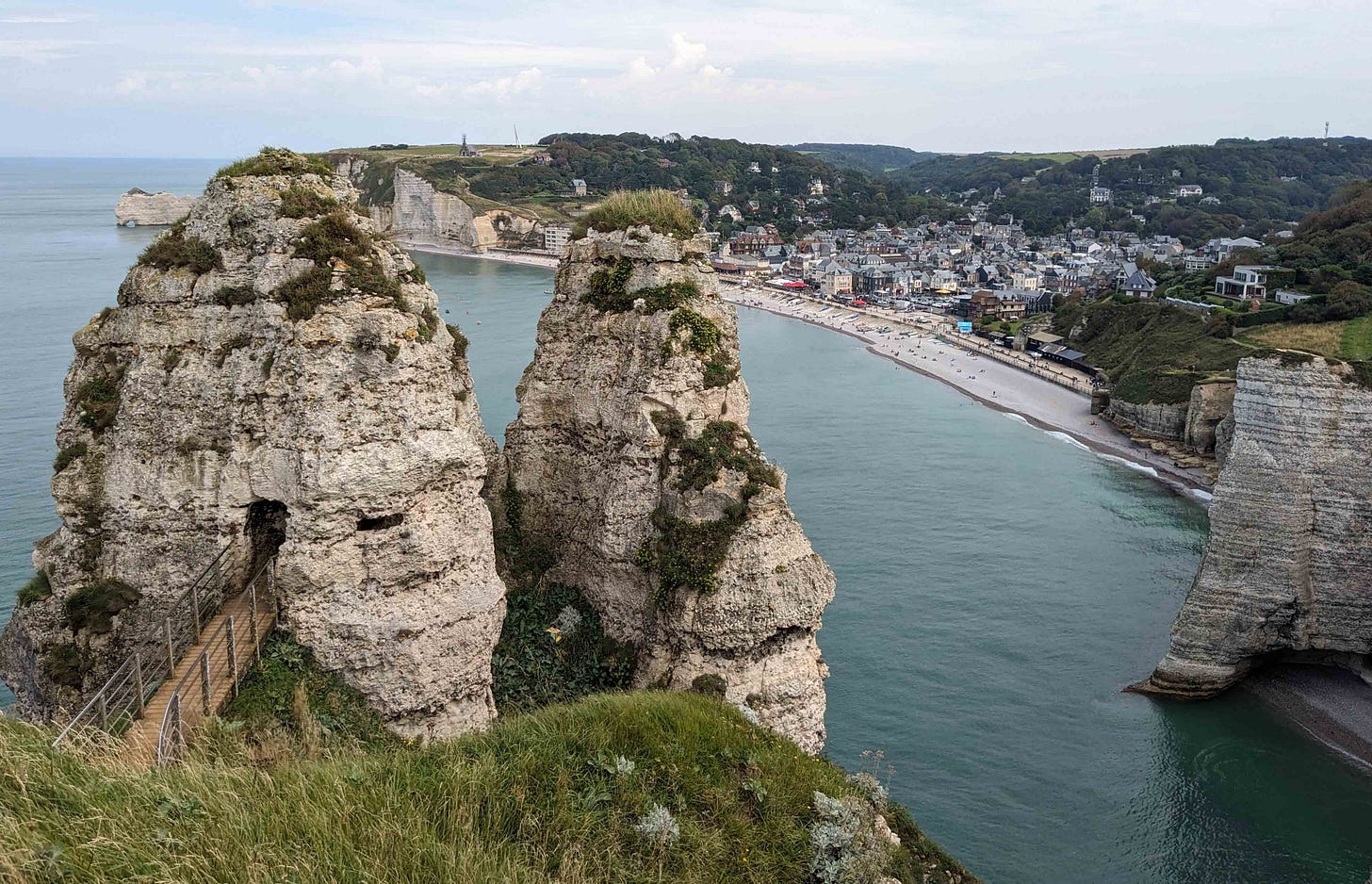


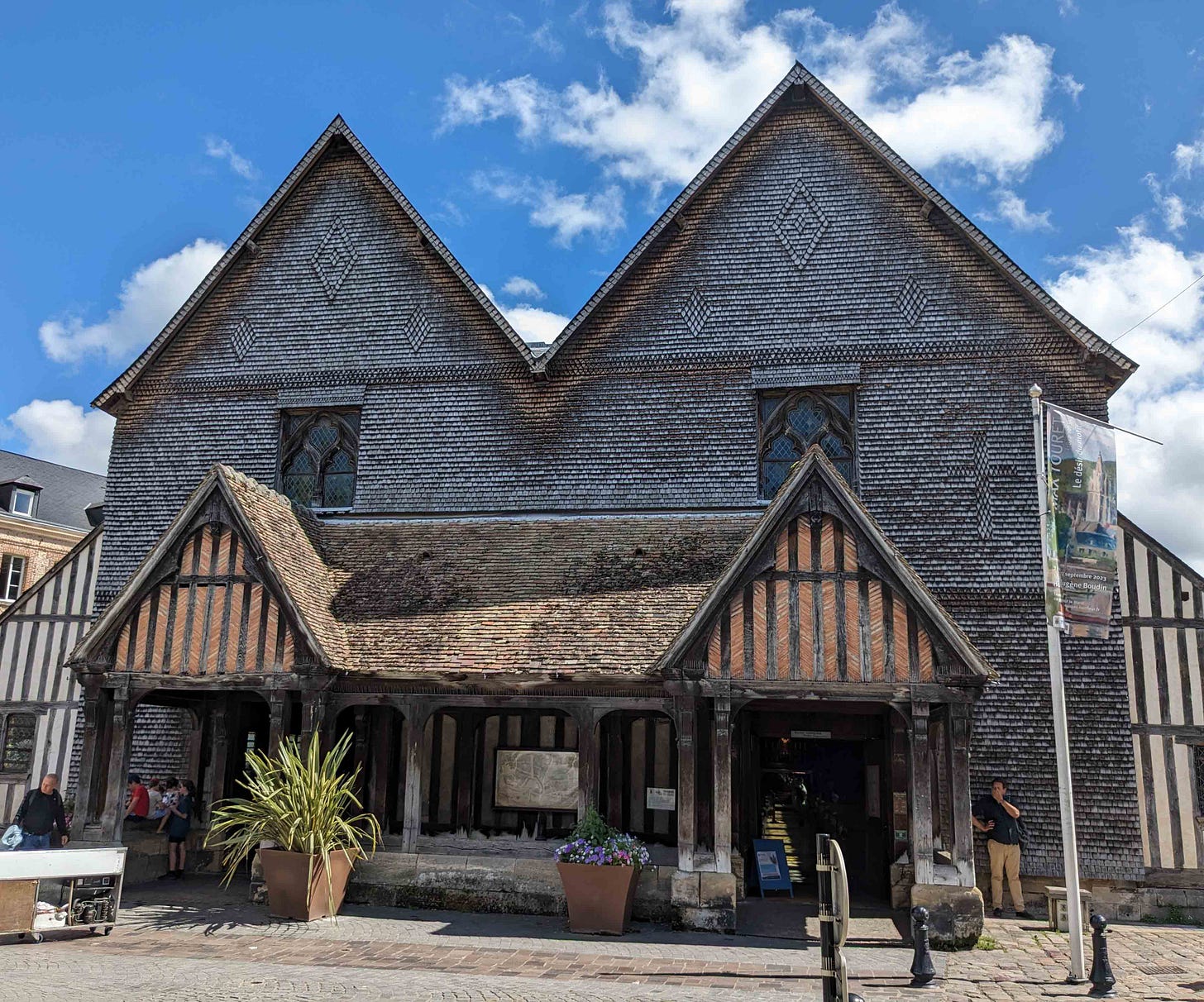

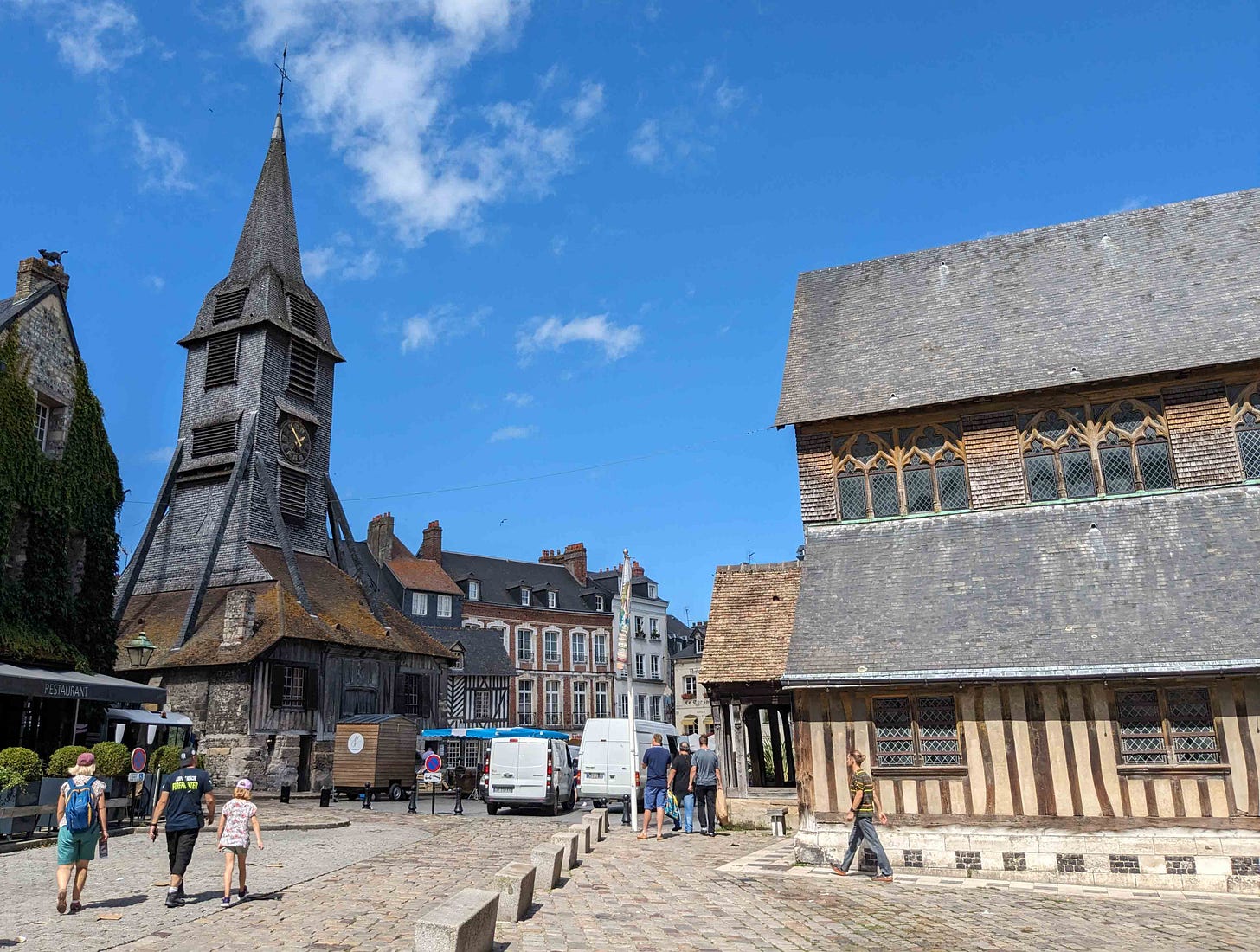

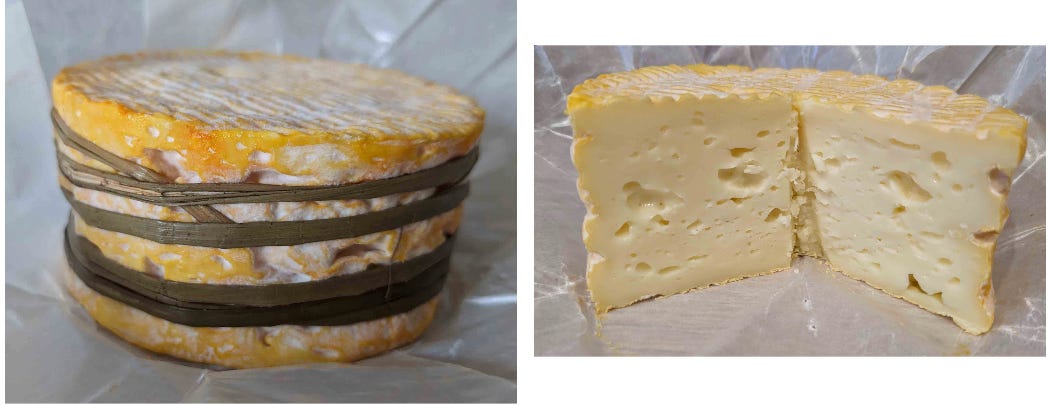
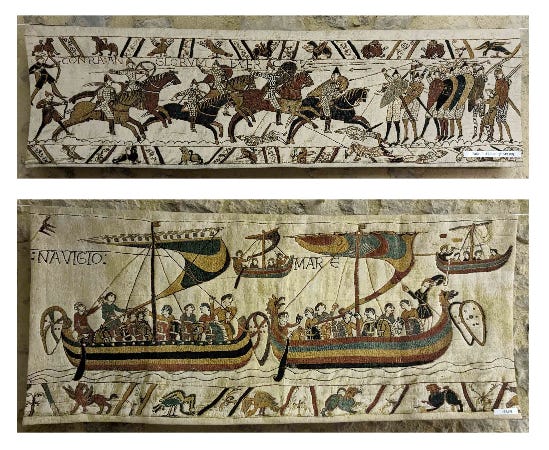
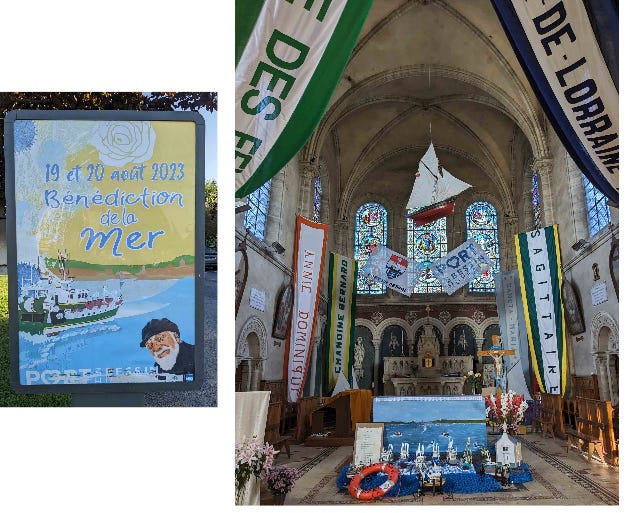

Great post! We named our poodle after Rollo because of the show Vikings on the History Channel.